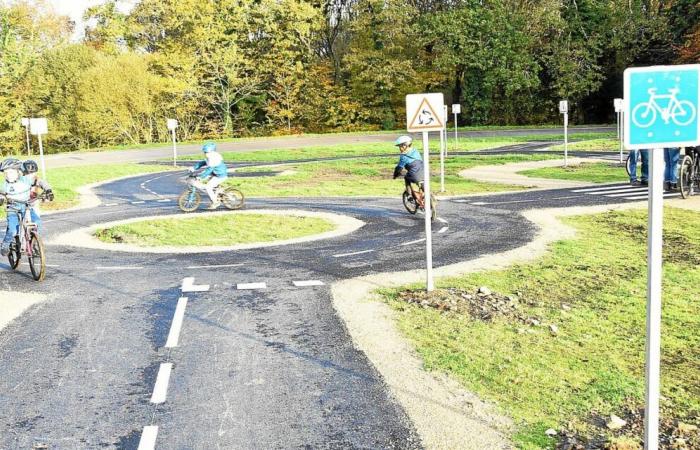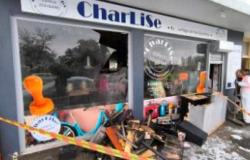Budding cyclists from the local club, accustomed to completing laps on the Frères-Zaouter Cycling ring in Quimperlé, can now change gear and dare a few joyful detours on the brand new fun course designed in the center of the track. The grassy area has been paved, dotted with signage, equipped with stone passages and wooden structures. This new freely accessible equipment is intended for young members of the Quimper Cycling Union, primary school students and all children wishing to become more experienced on the handlebars of their bike. “It’s a fun mobile journey. This is the fourth equipment of this type in France,” announces Jean-Charles Romagny, national youth technical advisor to the French Cycling Federation.
An investment of €81,000
This new facility dedicated to learning to cycle in the city has been open since this week. Built in one month, it cost €81,000 excluding tax. This project, financed 25% by the City of Quimperlé, was supported by the national sports agency (33%), Quimperlé community (30%) and the department (12%). “This fun space should encourage cycling and facilitate travel in the city,” explains Patrick Tanguy, deputy mayor in charge of sports. “Since 2019, knowing how to ride a bike has been included in primary school curricula, like knowing how to swim, with the aim of preparing as many children as possible to be able to go to college by bike. But it is not always implemented, due to lack of suitable equipment,” underlines Céline Sortais, educational advisor to the management of departmental national education services. This route therefore broadens the horizons of students and teachers, often reduced to pedaling in the schoolyard. But how to access the site?
An additional cost for purchasing bicycles
“The question of student transport and the bicycle fleet has not yet been answered,” confides a school teacher. Above all, it is the financing that has not yet been decided. If the bus shuttles from the schools are covered by the City of Quimperlé, the price of the equipment (around thirty bicycles and a container to store them on site) remains to be paid, estimated at more than €10,000. The subject will be settled before spring in order to allow students from the six CM2 classes in public schools to cycle on the introductory trails. From the learning circuit to work on balance and steering to the highway code course to learn about traffic rules, including the “school slope”, intended for braking exercises. So many invitations to then dare to cycle in the city. “We still need to let go of the brakes in the family circle and encourage this practice to prolong school learning,” recalls a teacher. For its part, the Quimper Cycling Union intends to take advantage of these complementary circuits to the cycling ring to vary the training and give new impetus to its cycling school, accessible to children from the age of 5.
France
Cycling






